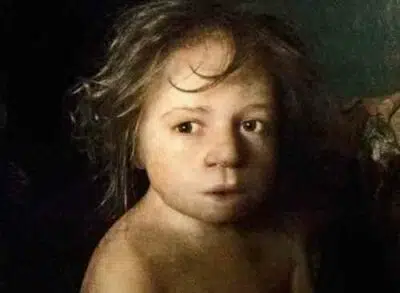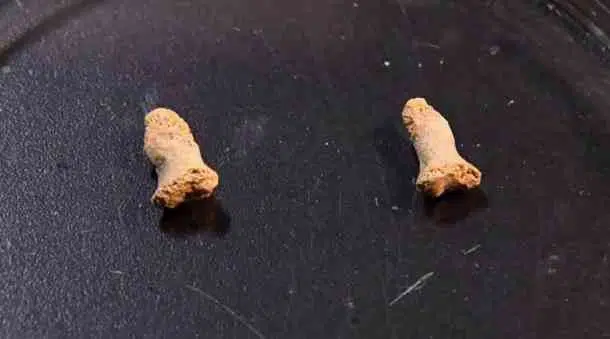THE NEANDERTHAL GIRL WHO MET A TERRIBLE END
In 2013 some very early hominid bones were uncovered by archaeologists in a cave in southern Poland. There have been extensive studies conducted on the remains, and they have led to some astonishing discoveries. Some of the bones are those of a six-year-old Neanderthal child who died violently. The bones are much older than originally thought, and the discovery is transforming our understanding of the first hominids in Europe.
The bones were discovered in a cave near Jaskinia Ciemna in the southern Małopolska region by a team from the Jagiellonian University.
They were unearthed several meters beneath the cave floor, which seems to have been occupied by species of hominoids for millennia.

She Was Neanderthal
The remains are those of ‘a member of the Homo sapiens neanderthalensis’ reported the First News website. It was initially difficult to identify the exact nature of the find as they were mixed with those of prehistoric animals. The find included three teeth and the tiny bones from the hand of a hominid child, and they were located near some ancient stone tools and implements.
The find was immediately recognized as very important and several years of extensive analysis were undertaken. It was only after the detailed analysis that it was established that they were the remains of Neanderthals.
This was not a surprise to the researchers, but when they dated the bones, they were stunned. First News reports that a professor of the Jagiellonian University stated that “the bones discovered by our team are the oldest hominid remains from the area of Poland.”

Finger bones of Homo sapiens neanderthalensis are the oldest hominid remains found in Poland. (Jacek Bednarczyk/ PAP)
A detailed analysis of the child’s finger bones showed they were about 115,000 years old. This is significant because they are twice as old as the previous finds in the area, which were teeth that date from 50,000 years ago.
Despite their great age, they ‘are fairly recent compared to a set of fossils found in Morocco and believed to be the oldest hominid bones ever discovered’ reports the Inquistir. Archaeologists found the remains in a cave near Marrakesh, which is believed to be 320,000 years old.
The finger bones, while tiny, tell us much about the hominid child. It has been established that she was about six but was no younger than four or older than seven. When analyzing the remains, the experts made a gruesome discovery – they had been ingested. In other words, the fingers of the child had been eaten and gnawed. Based on further studies, it was found that a large extinct bird had ingested the finger bone.
Perhaps it was the Elephant Bird, a vulture that weighed about a half-ton.
There are two possible theories. One is that the poor little girl appears to have been attacked and fatefully wounded by a large bird of prey who ate her fingers. The other possibility is the gigantic bird may have been a scavenger who ate the fingers of the child after she had died.
WHAT YOU MIGHT NOT KNOW ABOUT NEANDERTHALS
Neanderthals are generally classified by paleontologists as the species Homo neanderthalensis, but some consider them to be a subspecies of Homo sapiens ( Homo sapiens neanderthalensis ).
The first humans with proto-Neanderthal traits are believed to have existed in Europe as early as 600,000–350,000 years ago, and they died out around 30,000 years.
Some 5% to 20% of modern human DNA and genetic material is derived from this extinct species of hominoids. Neanderthals are now known to have had the same or similar levels of intelligence as modern humans. They also had their own distinct culture.
There are a lot of myths surrounding Neanderthals, such as they didn’t care for their children. There is evidence that they took great care. Burials of old and young Neanderthals were done with love, and they cared for their young and old for years. Neanderthals lived in homes with separate living spaces for eating, socializing, and sleeping.
We don’t know if they spoke or had a language, but x-rays show they could do so.
One study indicated Neanderthals had a reasonably sophisticated healthcare system and would have provided long-term support for sick and injured members of society.
Neanderthals lived alongside Homo Sapiens for several thousand years, and they interbred. We know we have 5% to 20% of their DNA today. They weren’t our ancestors; they were our distant cousins.
They might have contributed to drawings on cave walls, and they might have made tools. A flute-like instrument was found in one Neanderthal dwelling.
At least one of the potential Neanderthal tools is in use today in the Netherlands.
One study suggested that Neanderthals even passed some of their tool-making abilities to humans . Dutch scientists discovered 50,000-year-old tools made from deer ribs in southwest France, similar to bone lissoirs or smoothers, still used by leather workers today, and contain a polished tip that creates softer and more water-resistant leather when scraped against a hide. The excavated tools are similar to others found at sites occupied by early modern humans around 10,000 years later.
They didn’t just eat raw meat. They ate plants.
Neanderthal men might have had a chromosome that affected fertility, causing them to disappear.




If nothing changes, and we keep going in the direction we are going, eventually the white race will disappear just as neanderthals did.
Neanderthals were probably smarter than Humans, but humans procreated like rabbits and killed off the Neanderthals.